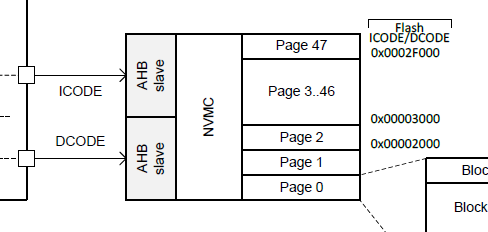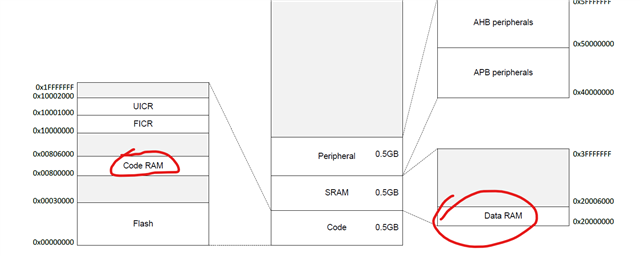Hi,
I have few doubts regarding the internal flash of nRF52810. I am not using SoftDevice. I am using SDK 17.1.0
I would like to write around 20 bytes to internal flash. I would like to use APIs "nrf_nvmc_write_word" and "nrf_nvmc_page_erase" instead of FDS and flash library. The reason is that the write to flash happen rarely and I don't think there is a need of wear levelling in this case.
- How can I know if I am writing to a bad page (write exceeded 10000 cycles) or how can I guarantee that the write is successful ? What will happen if I write to a page of which the cycle has exceeded 10000 ?
- The below given is the block diagram of the internal flash of nRF52810. How can I select the page where I can write my application data ? I know that the internal flash also contain the flashed hex file. How to understand the remaining memory that user can use for his application ?

3. From the below given log from SES, I understand that the code is flashed to the region 0x0000000 - 0x00001f83. What happens if I try to do a "write" in the code to this region of internal flash ?

4. At what point will be the blocks ".data" and ".bss" will be copied to the ram ? Is it done in the startup code ?
5. What is code RAM ? How is this used ?





